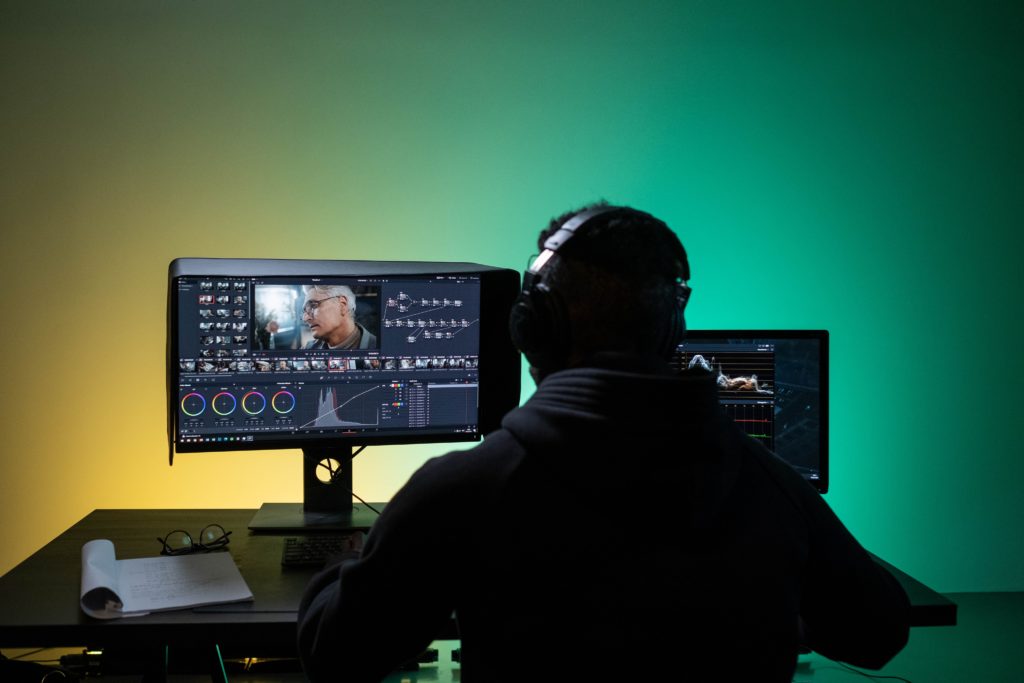Filmmaking is a very demanding and challenging job. You need to be able to edit your footage together in order to create something that looks professional. The right video editing software can do this for you but there are many different programs out there, so how do you choose the best one?
In this post, we’ll walk through the factors that make up a great video editing program, including general editing features, export settings, effects and user interface.
Focus on the Basics
Beginning video editors will want to choose a program that offers the following features:
- Cut, copy and paste. This is essential for trimming down clips, or rearranging them in your project.
- Add/remove clips. You can do this by dragging and dropping footage from one place in the timeline to another—or by using what’s called “overwrite mode,” which allows you to overwrite existing material without cutting it out first (but which could cause you problems if you don’t know what you’re doing).
- Add titles, transitions and music. These are items that are added manually as graphical elements on top of your video clip or edit point; they’re often used to make it easier for viewers to follow along with what’s happening on screen at any given moment. They also serve as useful visual cues for setting scene changes or establishing moods within an overall narrative arc (such as when showing someone walking through different rooms).
- Add effects like transitions between scenes (fade-ins/outs), wipes (a moving line across screen from one side to another) etc., filters which change hue levels or other qualities within frames themselves; voiceovers narrating overtop still images/animations etc..
User Interface
The user interface (UI) is what you see and interact with as you use video editing software. It includes the design, appearance, and layout of each tool on screen. The UI can impact your overall experience in a number of ways:
- Your comfort level. The easier it is for you to understand how each feature works, the more likely you’ll be able to use that feature successfully. This will make your editing process smoother and faster overall—and ultimately lead to better results.
- Your ability to create compelling projects quickly and easily. If there are too many steps involved in setting up a shot or adding transitions during post-production, then those tasks will take longer than necessary—all while making changes that may not be ideal for what you’re trying to achieve visually in each scene or sequence within your project (i.e., if something doesn’t work well visually).
Cost
The cost of a video editing software is going to be one of your biggest factors in deciding which program you’re going to use. While the price tag for these programs ranges from free, most will set you back anywhere from $0-$1,000 depending on what features and functions are included in the program. Some companies offer special discounts or packages that include additional tools and features. Some even offer free trials so you can try out their software before committing to buying it. To put it in perspective, Final Cut Pro and DeVinci Resolve both have one-time fees of $299 and $295 respectively, while their main competitor, Adobe Premiere comes as a monthly subscription of $20.99/month.
You also have to consider how much money it will cost to purchase either hardware or software upgrades if your computer doesn’t meet minimum requirements for certain programs. You may need updated RAM, a better graphics card, etc., depending on what kind of processing power your macbook pro has (and if it meets minimum requirements).
Cross platform collaboration
If you plan on working with other team members, the editing program you use matters. Final Cut is exclusive to Mac, while Premiere Pro allows users to share project files in the cloud and can also be used by both Mac and Windows users.
What’s the Output?
Export settings are essentially the last step in video editing. Here, you can choose where and how you want to export your video. This includes things like resolution, file format, frame rate, bitrate, and audio settings.
- The best thing to do is experiment with different export settings until you find what works best for what types of videos you’re making. For example, if I were making a commercial that was going on TV, I would probably use HD 1080p 60fps with AAC audio at 128kbps — but if I were just posting it on YouTube or Facebook then I would probably use 1080p 30fps with AAC audio at 128kbps instead (and maybe throw in some slow motion effects too).
- If there’s one piece of advice that applies across platforms: don’t shoot in 4K unless you have plenty of storage space!
Conclusion
The best video editing software for you depends on your needs and budget. The most important thing is to make sure the software you choose fits with your workflow and will be easy enough for you to use.

